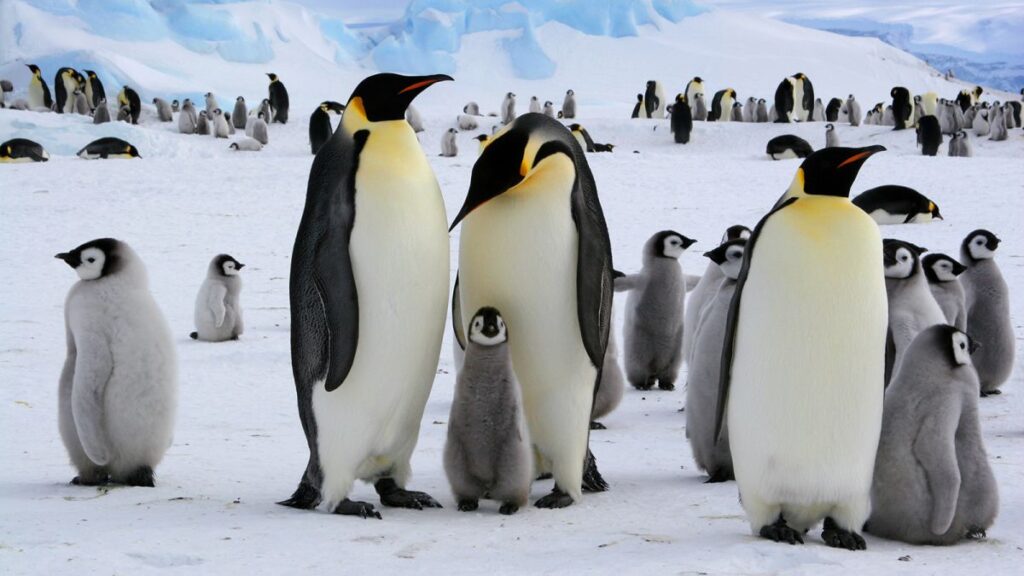These cute, chubby, and fluffy animals grow to become Antarctica’s expert divers. They start their lives off as gray and cuddly chicks, waddling around their snowy terrain. Only one egg is laid by a female per breeding season, and the egg is then incubated by the male partner for about two months while the female searches for food. When the mother returns, both parents continue to raise and feed the chick until it is strong enough to leave the colony. A unique feature of this species is that one parent carries the baby between its legs for warmth until the chick grows into its new waterproof feathers. After the chick sheds its layer of down, it’s able to swim without drowning, and it soon becomes an independent Emperor Penguin.
The Issue at Hand
Antarctica’s coastline currently has around 61 Emperor Penguin breeding colonies, almost all of which are at severe risk for extinction, especially for the next 30 to 40 years. Despite novel efforts to curb global warming, Antarctica’s environment is rapidly changing. With rising temperatures and melting sea ice, these penguins’ homes are disappearing more quickly than they can bear. The helpless chicks who aren’t able to swim because they lack waterproof plumage are stuck in an even more vulnerable plight.

Emperor Penguins depend on solid sea ice to build their colonies, mate, and survive. This habitat also provides them with a shield against predators from the ocean, and they use this land to scavenge for food. Because of global warming, greenhouse gas emissions and carbon dioxide levels are skyrocketing along with the average temperatures around the world. This causes the sea ice to melt, perpetuating countless species’ homes and colonies to vanish much faster than they were built.

There are roughly 625,000 to 650,000 individual Emperor Penguins along Antarctica’s coastline, and unfortunately, it’s predicted that nearly 26-47% of this population may decrease by 2050, putting this species at a heightened risk for extinction.
A Cascading Effect
In extreme environments like Antarctica, the presence of special species such as the Emperor Penguins is extra vital. Because of the more tightly knit food chains, these penguins’ disappearance could cause immeasurable and widespread damage to the Antarctic domain. Their species is also crucial for measuring how the Antarctic ecosystem is oscillating.
In order to learn more about the penguins and to develop a plan to support them in this dangerously warming climate, researchers are tagging penguin chicks every year to measure the health of the colonies and to study how they adapt to the changing environment (as part of the MARE project). Fisheries, tourism, and boats also have a negative impact on multiple species, including the penguins.
The vanishing of Emperor penguins, or any other species, is a detrimental tragedy to the planet, and forces humans to reevaluate and take a more proactive and strong approach to control global warming. By ensuring climate agreement goals are met, taking aggressive and thoughtful conservation measures, and expanding research methods may be the strategy to protect these precious animals and their abodes.


